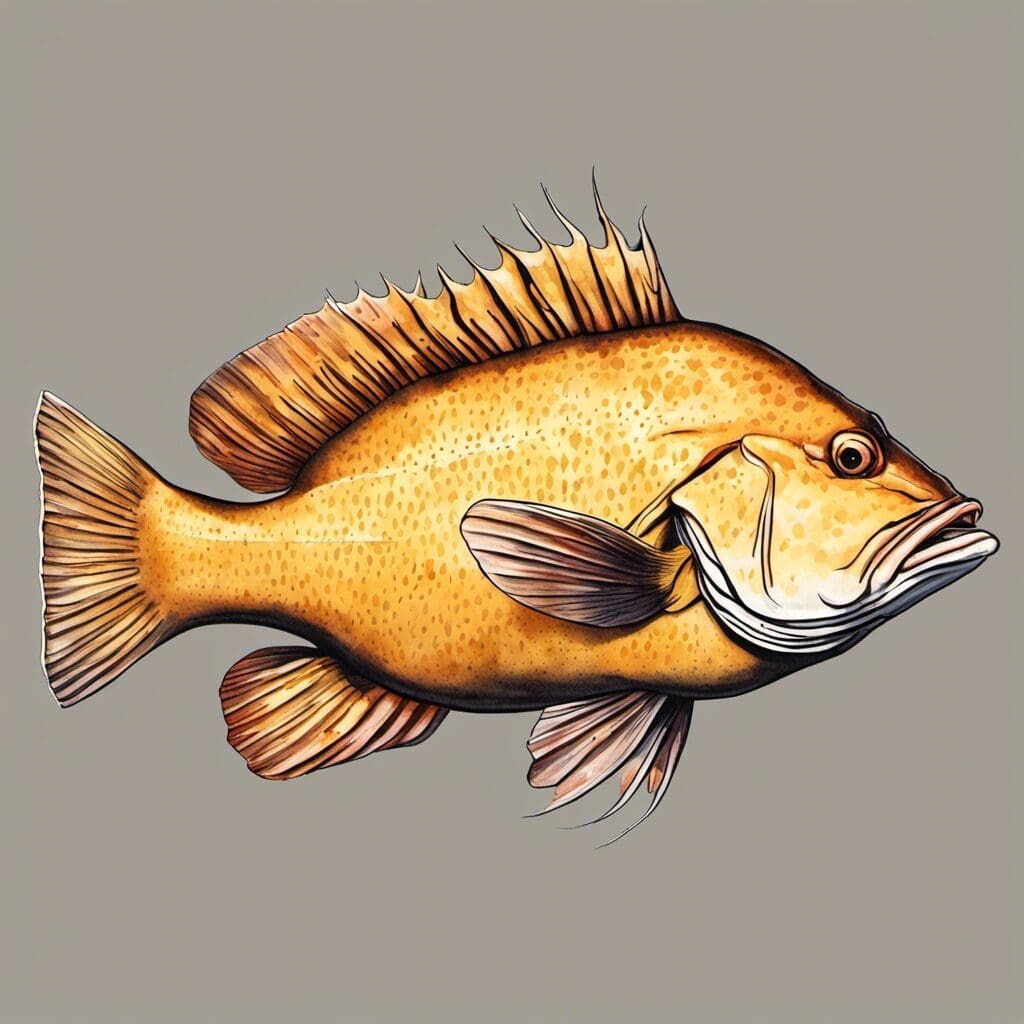The Yellowedge Grouper, scientifically known as Hyporthodus flavolimbatus, is a species of marine fish in the family Serranidae.
Conservation Status
The current conservation status of the Yellowedge Grouper is “Data Deficient.” However, minimal efforts and measures have been taken to preserve and monitor this species due to its wide distribution and deep-water habitats.
Statistics
| Average | Range | |
|---|---|---|
| Length | 1 meter | 0.5-1.5 meters |
| Weight | 15 kg | 5-30 kg |
| Average Lifespan | 20 years | N/A |
Distribution
The Yellowedge Grouper can be found in the western Atlantic Ocean, from North Carolina in the USA down to southeastern Brazil, including the Gulf of Mexico and Caribbean Sea. There is currently no known migration pattern for this species.
Habitats
The Yellowedge Grouper inhabit marine and brackish waters, thriving at a depth range of 90-400 meters. The preferred water temperature for this species lies between 20-28 degrees Celsius.
When and Where to See
Predominantly spotted between Fall and Spring, Yellowedge Groupers are most active during the late afternoon and early evening hours.
Best Fishing Locations
- Southwest Florida, USA
- Northern Gulf of Mexico, USA
- Southeast Texas, USA
- The Bahamas
- Eastern Yucatan Peninsula, Mexico
- Trinidad and Tobago
- North-Central Brazil
- Barbados
- Venezuela
- North-Eastern Cuba
How to Catch
The best baits to use for Yellowedge Groupers consist of squid and small fish. They typically respond well to bottom fishing techniques during the early evening hours.
Identification Guide
Recognizable by their yellowish-brown to gray body, a yellow-edged dorsal and anal fins. Unlike similar species, the Yellowedge Grouper has a rounded tail (or caudal fin) and an elongated second spine on the dorsal fin.
Culinary Information
How to Cook
Yellowedge Grouper can be fried, grilled, or steamed. Season with herbs, spices and citrus for maximum flavor.
Taste Profile
This species has a sweet, mild flavor with a medium-firm texture, comparable to Red Snapper.
Nutritional Information
Yellowedge Grouper is high in protein and low in fat. It is a good source of Vitamins B6 and B12 and beneficial minerals.
Additional Information
Young Yellowedge Groupers primarily feed on small fish and squid, while adults prefer crab, shrimp, and octopus. Known predators include larger fish species and, to a lesser extent, humans.
References and Further Reading
For more information about the Yellowedge Grouper, consider these resources:
1. “Fishes of the Gulf of Mexico Vol. 2: Serranidae to Triakidae” Thomas McEachran & Janice Fechhelm.
2. “Fishes of the Caribbean Reefs” – Ian F. Took
3. “Atlantic Coastal Fishes” – H. Dickson Hoese, Richard H. Moore.

